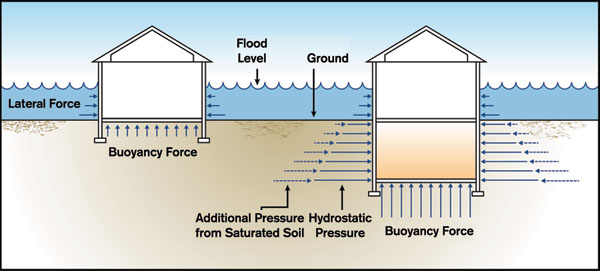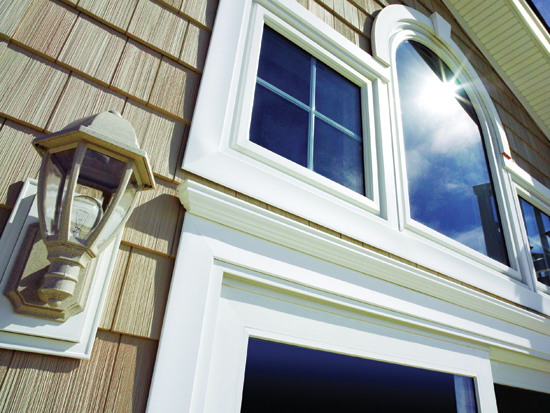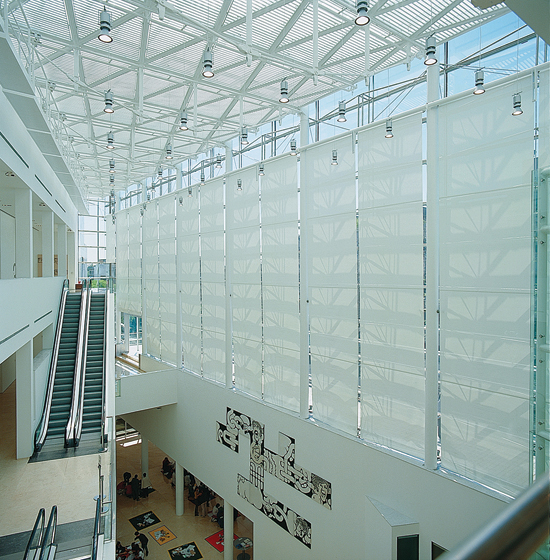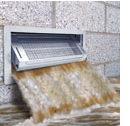Designing for Extreme Environments

Source: NOAA NCDC based on data updated from Kennedy et al. 2010
In response to this scientific work, the White House initiated a National Climate Assessment to summarize the impacts of climate change on the United States, both now and in the future. A team of more than 300 experts guided by a 60-member Federal Advisory Committee produced the report, which was extensively reviewed by the public and experts, including federal agencies and a panel of the National Academy of Sciences. (See National Climate Assessment, U.S. Global Change Research Program Report, nca2014.globalchange.gov.)
Their conclusion is that “climate change is already affecting the American people in far-reaching ways. Certain types of extreme weather events with links to climate change have become more frequent and/or intense, including prolonged periods of heat, heavy downpours, and, in some regions, floods and droughts. In addition, warming is causing sea level to rise as glaciers and Arctic sea ice melt, and oceans are becoming more acidic as they absorb carbon dioxide. These and other aspects of climate change are disrupting people's lives and damaging some sectors of our economy.”
Based on this work, in November 2013, the President of the United States issued Executive Order 1365 “Preparing the United States for the Impacts of Climate Change.” This Executive Order establishes a Council on Climate Preparedness and Resilience with a mission to modernize federal programs to support climate resilient investment. While some of the directive deals with information, agency coordination, and public infrastructure issues, there is a recognition that resilient buildings are a key component for allowing people to remain and continue to function in their communities.
Role of Professional Organizations
In response to the growing awareness of the need for resiliency and the leadership of the federal government, the not-for-profit National Institute of Building Sciences convened a broad-based meeting in September 2013 for the purpose of dialogue among government and numerous professional organizations. The forum included representatives from architectural, engineering, planning, green building, environmental, building code, and infrastructure organizations as well as federal agencies such as the Department of Homeland Security (DHS). One of the conclusions of this dialogue is that, while there is a role for government to play, there is a bigger role for the design and construction community to play.
In particular, the group focused considerable attention on the challenges of pre-incident planning versus emergency response. By acknowledging that many of the impacts of weather and climate can be reasonably well predicted in any given community, it follows that planning for those impacts is both possible and desirable. Related to that is the notion that prevention of damage and harm can be facilitated by building codes and standards that recognize the issues relevant to a community and effectively legislate a higher level of performance. There was little doubt that the design community can support any level of performance required, but that a corresponding level of regulatory requirement or other insistence is required to actually move towards a specific basis of design. Hence, it is incumbent on a variety of professional organizations to continue the dialogue to collectively achieve design standards appropriate to different concerns in different locations as well as those that may be universal.
Role of Design Professionals
Working with building owners and clients, design professionals of all disciplines need to be attuned to site-specific issues that create environmentally induced demands on buildings and grounds. Part of the basic design program and criteria for a successful project increasingly needs to include measures to address the weather and climate conditions of the building, both current and anticipated. Some of this approach is like buying an insurance policy—you hope you never have to use it, but when something occurs, it is essential in order to continue forward. Hence, resilient buildings are designed in the same manner, anticipating the worst-case scenario as a design condition and fully expecting to meet or exceed it.

Image courtesy of Smart Vent Products, Inc.
Design professionals who understand the forces at work in an extreme environmental situation, such as flooding, can appropriately create buildings that can tolerate stresses and recover quickly.
The Rockefeller Foundation is one of many organizations that have led advanced thinking in the area of resilient building design. Based in New York City, which has seen a fair share of extreme events in recent times, it has engaged design professionals directly in conversations about resiliency. Justin Davidson, architectural critic at New York magazine, commented on the general concept, noting: “A resilient building is a building that rolls with the punches. A resilient building in a flood zone isn't necessarily designed not to get wet—it can get wet, because it's designed not to fall apart.” This is a significant distinction. The issue isn't elimination of a condition, it is the ability to design a building to survive that condition and continue to be operational in short order. Davidson provides an example from the low-lying Red Hook portion of Brooklyn, which was pretty heavily battered by floodwaters during Superstorm Sandy in 2012. “The two biggest businesses in Red Hook are Ikea and Fairway [supermarket]. The way Ikea is designed—where they lift everything to the second floor—meant that it could withstand damage, restock, and go back to business immediately. But Fairway is in a Civil War-era warehouse, with no protection, and the entire store was underwater. They had to close, repair, and restock their entire inventory. A smaller business would have been wiped out completely.” The basic design and layout of the two buildings made the difference between being able to bounce back quickly compared to a more dramatic, and expensive, effort to recover.
Design Considerations
The specific forces of weather and climate can take different forms with differing impacts on buildings. Some are indirect impacts like a storm that interrupts electrical service to a building. Others impact a building directly, and those are the considerations we will primarily focus on in four areas: wind and rain resistance, sun control, thermal resistance, and flood water control.
Wind and Rain Protection
In severe weather events, wind and rain are usually the most common things to directly impact a building. However, the reality is that buildings are designed to provide wind and water protection all the time. Weather-related events simply increase the amount or intensity of rain and wind that need to be addressed. Techniques to make the opaque portions of a building envelope resistant to wind and rain are fairly well known and straightforward as long as they are detailed properly. However, it is the openings, such as windows and doors, that deserve special attention to prevent intense rain and wind from penetrating a building.
Because of potential vulnerabilities, windows and doors in buildings have been subject to special scrutiny, particularly in areas where severe weather is readily anticipated. The Florida Building Code, for example, has identified design wind loading for all areas of the state and requires windows and doors to demonstrate the ability to withstand the stated wind conditions for the location where they are installed, ranging from 115 to 180 miles per hour. This is obviously more than most building codes require and is indicative of planning and regulation that addresses the hurricane-prone nature of the state of Florida.
Taking it even one step further, the Florida Building Code also identifies the southernmost counties of the state as part of a High Velocity Hurricane Zone (HVHZ). Any building work in this zone must meet additional requirements for wind and water resistance, particularly all types of windows, glazing, and curtain wall assemblies. Products must be tested and shown to comply with these requirements in order to be installed in this zone. Megan Mazur, Director, Channel and Product Management, Simonton Windows & Doors, notes, “Most window manufacturers recognize that there are extreme conditions that need to be met in order for their products to be accepted for code-compliant use. Hence, as a practical matter, it is common to produce windows that meet the most stringent requirements and offer them throughout the state or region.” Using windows that meet the superior performance requirements assures not only code compliance but a greater degree of resiliency in buildings, particularly if code minimum requirements are exceeded.
Sun Control
Windows and other glazing systems are not only intended to keep things out, but to let things in, like natural daylight and perhaps fresh air. Sunlight in particular is commonly a welcome thing and brings with it many positive attributes. However, too much of a good thing becomes problematic. In buildings that rely on air conditioning for human comfort, direct sunlight is treated as something to reject or control due to problems from solar heat gain, not to mention glare and excessive brightness. In situations where electricity is in fact interrupted and mechanical air conditioning is no longer available, then the issue of heat and light control from the sun becomes all the more significant. Bill Strickland, National Market Manager of Sun Control Products, PHIFER Incorporated, notes, “As architects and designers incorporate more glass into their building designs, the need to manage harsh solar heat and glare becomes essential.”

Photo courtesy of Simonton Windows & Doors
Windows and doors are commonly the first line of defense against wind and rain in openings in exterior walls.
Overall, then, a good building design needs to find the balance between the beneficial properties of sunlight while mitigating or controlling the negative ones. A system that can be adjusted according to the needs of a building across the hours of the day or the times of the year provides the greatest control and management of sunlight. This need for management is true on an ongoing basis and also true in the aftermath of severe events.

Photo courtesy of Rielamericano, Buenos Aires Argentina, and PHIFER Incorporated
Balancing the right amount of beneficial sunlight with solar control to prevent glare and overheating is a significant design concern for all buildings.
Notice

Photo courtesy of Grupo American Classic, Monterrey, Mexico
www.phifer.com

www.polyiso.org

www.Simonton.com

www.smartvent.com









